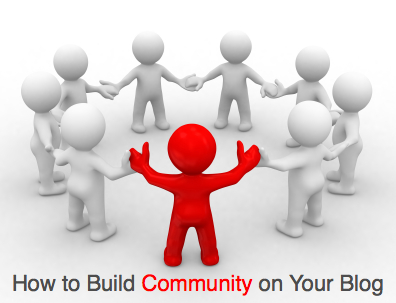Thursday, November 17, 2011
Reflection
Online video rules!
This article talks about the prevalence of online videos as they are becoming of the main source of media attraction. According to an online survey done by Douglas Simon, he said that 33% of the media outlets are using online video to cover news and online media has now officially become a video programming network. Usage of online videos are growing bigger and bigger and show no signs of stopping (O'Neill, 2011).
People nowadays have very short attention span. They cannot sit still in front of the TV or radio to watch news the whole day. Henceforth, online video has become their alternative to catch up with the latest news around the world. 21st century, no longer the century where people still has to get a network cable to go online. It is all about WiFi and everyone gets to go online anytime anywhere. While surfing the net, they can go YouTube or news site to get the latest information and news.
For example, LiveStream is a video site where they put up videos live. The visitors' can go to the site and stream videos freely. It is also a live blogging platform and social networking sites. Media outlets can just post their news online and the people will get to watch the news online. Besides, it can be recorded and rewind. Hence, it gives more options to the society to watch it live or record it and watch the news later (Schonfeld, 2011).

O'Neill, M 2011, 85% of Media Websites Now Use Online Video To Cover News, viewed 17 November 2011, <http://socialtimes.com/85-of-media-websites-now-use-online-video-to-cover-news_b60505>.
Schonfeld, E 2011, Livestream Refreshes Video Service: "Viewers Can Rewind While Its Live", Techcrunch, viewed 17 November 2011, <http://techcrunch.com/2011/10/27/livestream-refreshes-video/>.
Y U Plagiarise!

Wednesday, November 16, 2011
iPad - the wonders of visual texts
Monday, November 14, 2011
Sexism
It is actually a form of discrimination based on a person's sex. It can also be said as stereotyping of gender roles.
Sexism is usually used in relation with gender discrimination especially against women, to be exact in the context of patriarchy (Wikipedia.org, 2011), where the society thinks that men have higher status compared to women.
The picture below is an illustration of how women are treated:

References List:
Chatel, A 2011, Poll: Do You Find Chivalry To Be Sexist?, The Grind Stone, viewed 13 November 2011, <http://thegrindstone.com/relationships/poll-do-you-find-chivalry-to-be-sexist/>.
Lepore, M 2011, The 'Sex and The City' Stereotype: Why Successful Childless Women Have To Fight The Hardest, The Grind Stone, viewed 13 November 2011, <http://thegrindstone.com/strategy/the-sex-and-the-city-stereotype-why-successful-childless-women-have-to-fight-the-hardest-786/>.
Monday, August 22, 2011
Screen vs Printed Document Design

Therefore Nielsen suggested that to attract readers' attention, while writing for the web, web organisers should know a few guidelines which are:
- Be succint (short texts)
- Scannability
- Hypertext Structure
- Kanagu 2010, Kill or co-exist?: print media vs electronic media, viewed 22 August 2011, <http://kanaguonline.wordpress.com/2010/06/28/print-media-vs-electronic-media/>.
- Kress G & van Leeuwen, T 1998, 'Front pages: (the critical) analysis of newspaper layout', Approaches to media discourse, eds Bell, A & Garrett, P. Blackwell, Oxford, ch. 7, pp 186-219.
- Morkes, J & Nielsen, J 1997, Concise, scannable, and objective: how to write for the web, viewed 22 August 2011, <http://www.useit.com/papers/webwriting/writing.html>.
- Nielsen, J 1997, Writing for the web, viewed 22 August 2011, <http://www.useit.com/alertbox/9703b.html>.
- Nielsen, J 1999, Differences between print design and web design, viewed 22 August 2011, <http://www.useit.com/alertbox/990124.html>.
- Nielsen, J 2006, F-shaped pattern for reading web content, viewed 22 August 2011, <http://www.useit.com/alertbox/reading_pattern.html>.
- Reep, DC 2006, 'Document design', Technical writing:, ch. 6, pp. 133-172.
- Redshaw, K 2003, Web writing vs. print writing, viewed 22 August 2011, <http://www.kerryr.net/webwriting/guide_web-vs-print.htm>.
- Walsh, M 2006, 'The 'textual shift': examining the reading process with print, visual and multimodal texts', Australian Journal of Language and Literacy, vol. 29, no. 1, pp. 24-37.
New Form of Media Publishing

- 'A new form of journalism?' 2011, viewed 23 August 2011, <http://richpetrie89.wordpress.com/2011/04/14/a-new-form-of-journalism/>.
- Harlow, S 2010, Facebook vs. Twitter: are people actually reading the articles, or just sharing them via social media?, Knight Center for Journalism in the Americas, viewed 23 August 2011, <http://knightcenter.utexas.edu/blog/facebook-vs-twitter-are-people-actually-reading-articles-or-just-sharing-them-social-media>.
- Harlow, S 2010, Finding a place for Twitter in journalism, Knight Center for Journalism in the Americas, viewed 23 August 2011, <http://knightcenter.utexas.edu/blog/finding-place-twitter-journalism>.
- Walsh, M 2006, The 'textual shift': examining the reading process with print, visual and multimodal texts, Australian Journal of Language and Literacy, vol. 29, no.1, pp. 24-37.
Sunday, August 21, 2011
Blogging Communities, Building Blogging Communities & Types of Blogging Communities

- The Seed
Blog posts should serve a purpose and OUTSTANDING!!
- Seed Sown on Right Soil
Select the right platform and accepts comments from readers and make the readers feel prioritised.
- A Clean Platform/Consistency
Presentation of content is indeed important and must be updated in a regular basis in order to catch hold of your readers.
- Accommodate Visitors
When readers increase, create new platforms and add new functionality in order for more interactions with readers.




 Global Voices is a community blog of more than 300 bloggers and translators around the world that come together to us reports from blogs and media everywhere with emphasis on voices that are not usually heard in mainstream media. It is a Topic Centric Community as the bloggers blog based on the topic, not based on own interest. Their personal details are not revealed in the community but their emails are available for the public to email or to instant message them for queries. The bloggers play the role of 'telling' the voices which cannot be heard which appropriately defined the 'affordance' theory. Affordance is applied to Global Voices as the bloggers will use words to narrate the topic and by 'showing' photos and videos to maximise the interactions with the community (Walsh, 2006).
Global Voices is a community blog of more than 300 bloggers and translators around the world that come together to us reports from blogs and media everywhere with emphasis on voices that are not usually heard in mainstream media. It is a Topic Centric Community as the bloggers blog based on the topic, not based on own interest. Their personal details are not revealed in the community but their emails are available for the public to email or to instant message them for queries. The bloggers play the role of 'telling' the voices which cannot be heard which appropriately defined the 'affordance' theory. Affordance is applied to Global Voices as the bloggers will use words to narrate the topic and by 'showing' photos and videos to maximise the interactions with the community (Walsh, 2006).- Clapperton, G 2010, What is blogging, and how do I get a blog?, BBC, viewed 21 August 2011, <http://www.bbc.co.uk/webwise/guides/how-to-get-a-blog>.
- Jane 2011, Tips on building a niche blogging community, viewed 23 August 2011, <http://www.seommotips.com/blogging-tips/tips-on-building-a-niche-blogging-community/>.
- Walsh, M 2006, 'The 'textual shift': examining the reading process with print, visual and multimodal texts', Australian Journal of Language and Literacy, vol. 29, no. 1, pp. 24-37.
- White, N 2006, Blogs and community - launching a new paradigm for online community, The Knowledge Tree, viewed 21 August 2011, <http://kt.flexiblelearning.net.au/tkt2006/edition-11-editorial/blogs-and-community-%E2%80%93-launching-a-new-paradigm-for-online-community>.
- Williams, R 1993, The virtual community, viewed 21 August 2011, <http://people.ucalgary.ca/~bakardji/community/definition.html>.
Classifications of Blogs
- Law - Above The Law

- History - The History Blog

- Fashion - Fashion Style Me


- Linklog - iamcal

- Sketchlog- L4D2 Sketchlog


- Pamphleteering Blog
- The Digest Blog
- The Advocacy Blog
- The Popular Mechanics Blog
- The Exhibition
- The Gatewatcher
- The Diary
- The Advertisement
- The News Blog

- Haskins, T 2007, Different motivations for blogging, viewed 23 August 2011, <http://growchangelearn.blogspot.com/2007/03/different-motivations-for-blogging.html>.
- Simons, M 2008, Towards a taxonomy of blogs, Australian Policy Online, viewed 21st August 2011, <http://www.apo.org.au/commentary/towards-taxonomy-blogs-0>.
Blogging phenomenon & its benefits towards community
The blogging phenomenon is now becoming a major issue amongst the society that the size of blogosphere is seemingly increasing. As you can see from the pie chart below, according to Technorati (2010), the state of blogosphere in 2010 is seemingly huge that blogging has become a worldwide phenomenon and almost everyone blogs. According to the chart, United States of America has the largest size of bloggers.

Based on the results of a survey done by Press Microsoft Malaysia on the blogosphere in Malaysia, 81% of Malaysians blog for their friends and family (Press Microsoft Malaysia 2006) and primarily of the bloggers are women.
There are lots preferable blogs that are normally visited by the people in Europe, Asia and Malaysia such as personal blogs, political blogs, corporate blogs and so on.
With the existence of blogs today, public switched from mainstream media to online blogs for updated news. As an example, political blogs in Malaysia provide insights of the politics in Malaysia and give alternative news to the citizens about recent happenings in the country and encourages the people to actively participate in political discussions. On the other hand, in Iran, blogging about politics is quite prevalent but at the same time it has huge risk. In April 2003, Iran has the first government to imprison a blogger – Sina Motallebi who owned a popular weblog RoozNegar.com as it is said to have gone against the regime of Iran (Alper & Barcella, 2006).
In conclusion, undeniably blogging has become a huge part in humans’ life especially teenagers and young adults as a medium to voice out their own concerns and it is growing rapidly as it is seen to be the new form of media to express their feelings.


- Alper, A & Barcella, L 2006, Iran, blogging against regime, AlterNet, viewed 21st August 2011, <http://www.alternet.org/story/30702/>.
- Branum, J.M 2001, The blogging phenomenon: an overview and theoretical consideration, JMBZINE.com, viewed 21st August 2011, <http://www.ajy.net/jmb/blogphenomenon.htm>.
- State of the blogosphere 2010 introduction 2010, Technorati, viewed 21st August 2011, <http://technorati.com/blogging/article/state-of-the-blogosphere-2010-introduction/>.
- Women rule in Malaysian blogosphere 2006, Press Microsoft Malaysia, viewed 21st August 2011, <http://www.microsoft.com/malaysia/press/archive2006/linkpage4337.mspx>.
Purpose of Blog
The main purpose of me creating this blog is to discuss the issues that the public who are concerned about the media field would face. Besides, creating this blog does not just discuss the issues faced in media field but to educate the people about the principles of publication and designs.
However, who are those that are interested in reading this blog?
No doubt it will be those who are involved in communication field such as students, media and communication lecturers and other media and communication practitioners, yet students and media practitioners are the two major target audiences.




